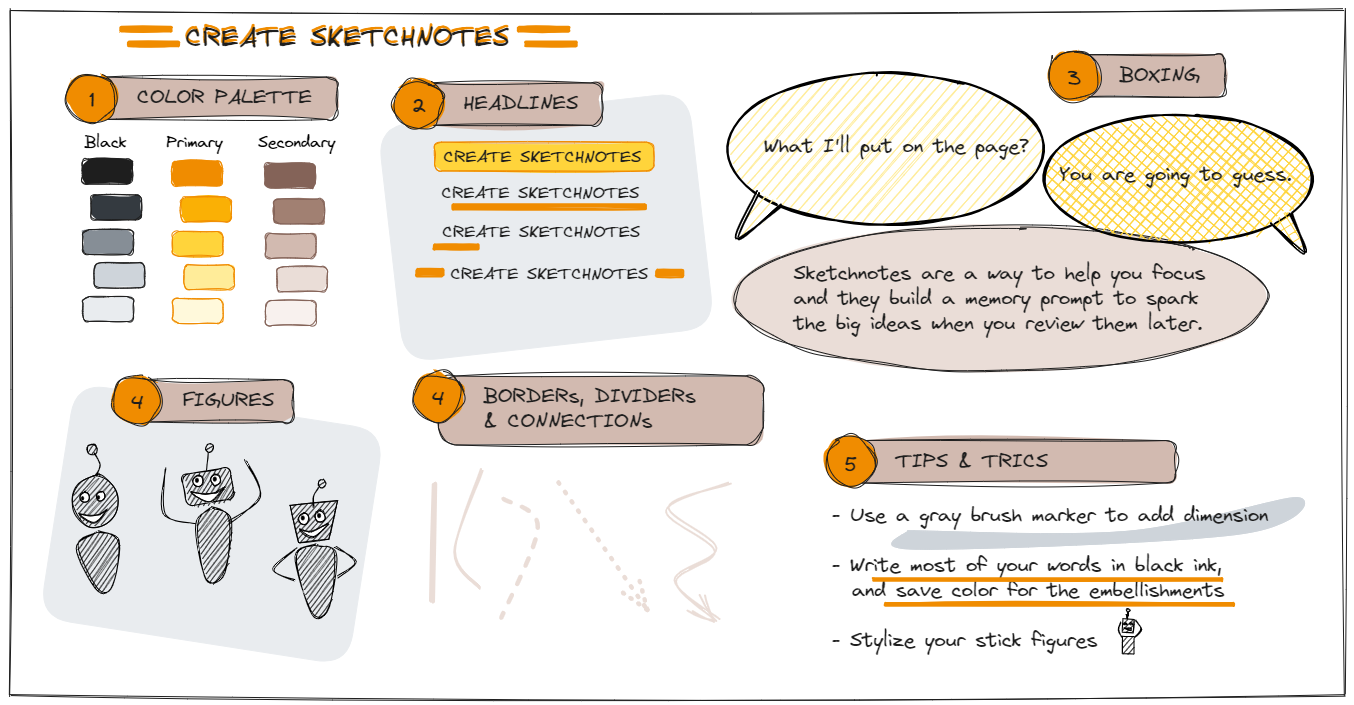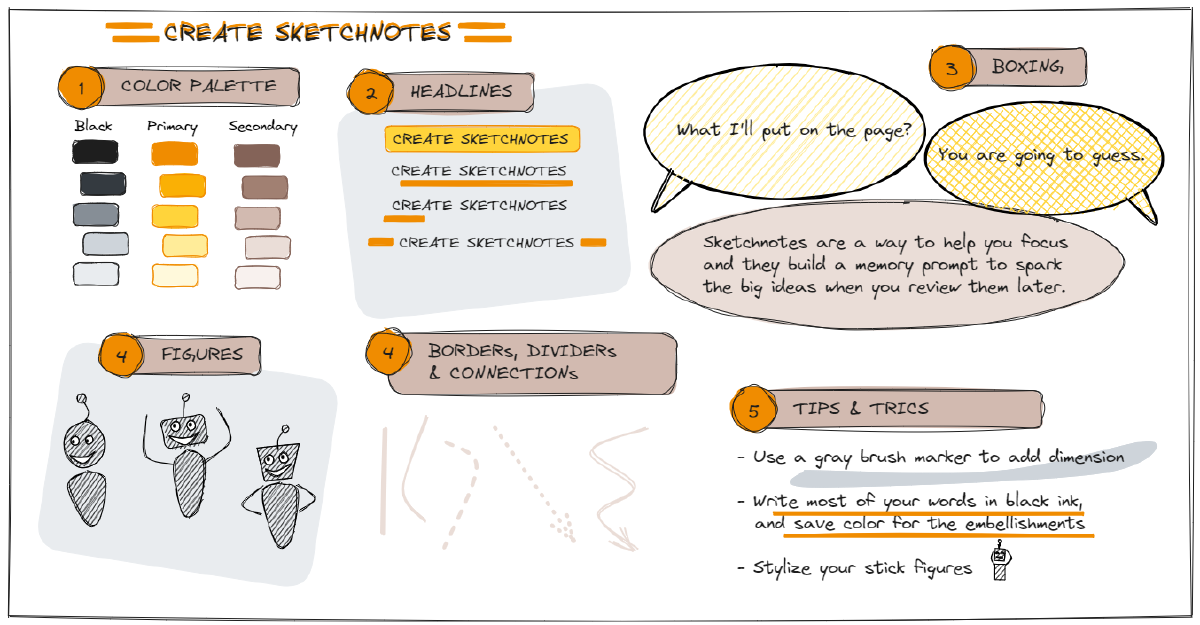How to Start Drawing Sketchnotes#
Sketchnoting is a visual note-taking process that combines hand-drawn elements and text to capture ideas in a more engaging and memorable way. Whether you’re a student, a professional, or someone looking to boost your creativity, sketchnoting can be a valuable tool. Here’s a guide to get you started with the essential elements of sketchnoting.

Color Palette#
Choosing a color palette is a critical first step in sketchnoting. A limited palette helps maintain consistency and clarity in your notes. Start with 3-5 colors: one for primary text, one for secondary text, and a few for highlights and embellishments. Black is often used for the main content, while brighter colors like blue, red, or green can be used to highlight important points or draw attention to specific areas.
When selecting your colors, consider the mood and tone of the subject matter. For instance, warm colors can create a sense of urgency or excitement, while cool colors can convey calm and stability. Experiment with different combinations to see what works best for you.
Headlines#
Headlines are the backbone of your sketchnotes. They should be bold, clear, and easily distinguishable from other text. Use a larger font size and a different color to make them stand out. Adding simple embellishments like underlines, shadows, or banners can also help emphasize your headlines.
Consider using different styles for different levels of headlines. For example, main headlines can be all caps and boxed, while subheadings can be underlined or italicized. Consistency is key, so stick to the same styles throughout your sketchnote to help guide the viewer’s eye through the content.
Boxing#
Boxing is a technique used to separate and organize information. Drawing boxes around key points, quotes, or important sections can help them stand out and be easily found later. Boxes can be plain or decorated with shadows, rounded corners, or dashed lines to add variety and visual interest.
Don’t be afraid to experiment with different shapes and sizes of boxes. Use larger boxes for important sections and smaller ones for minor details. This hierarchical structuring helps in prioritizing information and makes your sketchnote more readable.
Figures#
Figures and icons are essential for visual storytelling in sketchnotes. They can range from simple stick figures to more detailed illustrations, depending on your comfort level and the time available. Start with basic shapes and add details gradually. The goal is not to create perfect art but to convey ideas clearly and quickly.
Common figures include people, arrows, lightbulbs (for ideas), books, and computers. Practice drawing these frequently used icons so you can sketch them quickly and confidently during your note-taking.
Borders, Dividers, and Connections#
Borders, dividers, and connections help structure your sketchnote and guide the reader’s eye. Borders frame the entire sketchnote or specific sections, adding a finished look. Dividers, such as lines or arrows, separate different ideas or topics. Connections, like arrows or dotted lines, show relationships between concepts.
Experiment with different styles of borders and dividers—straight lines, wavy lines, or even themed designs relevant to your content. Consistent use of these elements will make your sketchnotes look organized and cohesive.
Tips & Tricks#
- Start Simple: Begin with basic shapes and stick figures. As you gain confidence, you can add more details.
- Practice Regularly: Like any skill, sketchnoting improves with practice. Set aside time each day or week to practice your drawing and note-taking.
- Use Templates: Pre-designed templates can help you organize your sketchnotes until you develop your own style.
- Stay Organized: Keep your sketchnote supplies (pens, markers, paper) organized and accessible.
- Review and Reflect: After each sketchnote session, review your work. Note what worked well and what you could improve.
- Incorporate Textures: Adding textures, such as cross-hatching or stippling, can add depth and interest to your drawings.
- Have Fun: Most importantly, enjoy the process. Sketchnoting is a personal and creative activity, so let your personality shine through your notes.
By incorporating these elements into your sketchnoting practice, you’ll be able to create visually appealing and informative notes that help you retain information and communicate ideas effectively. Happy sketchnoting!
